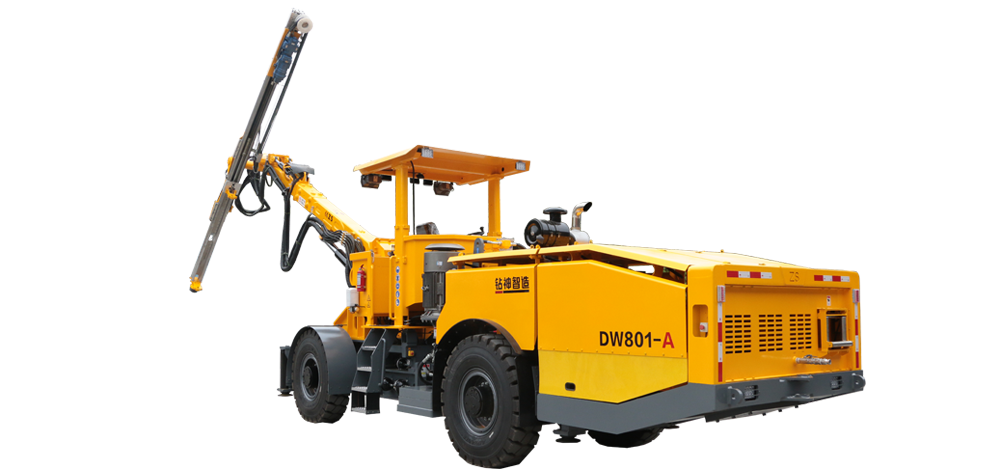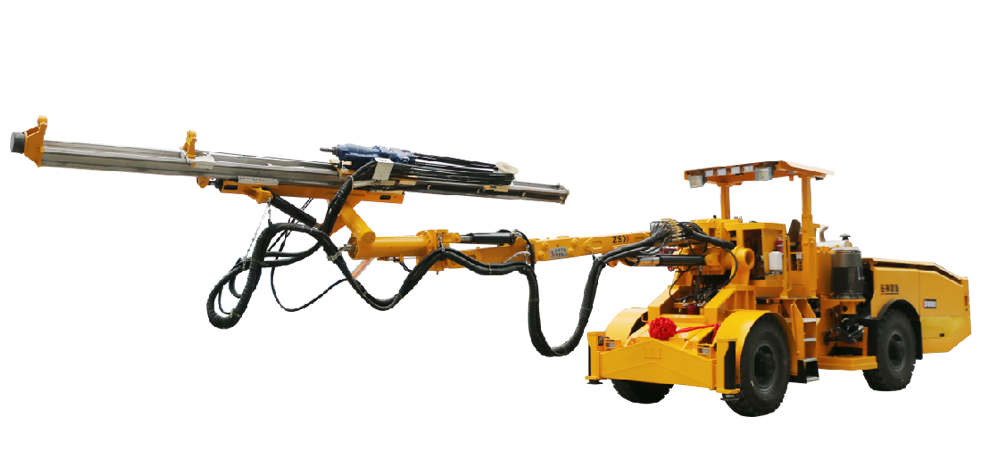The mining drill rig technology has revolutionized mining as it has become a very accurate process-driven by decades of innovation. The mining drill rig is more than a tool and is the centerpiece to an efficient and safe mineral exploration. Although the word may sound general to the outside world, the mining sector portrays it to be a specialized tool very essential to underground digging. A mining drill rig is a rig which is designed to be used in drilling holes very deeper into rock formations. The holes have a number of uses; to precondition blasts, to retrieve minerals, or to place bolts that reinforce tunnels. The current rigs have been designed to reduce wear and tear on both sides by creating hydraulic systems, computerized controls, and strengthened chassis. They are capable of adapting to a number of geological conditions. And what is more important, they can be working without too much human supervision. What is the significance of mining drill rigs nowadays? The demand for precious minerals keeps on increasing. Copper, gold, lithium these can be considered the blood of green power, electronics and constructions. However, near-to-be deposits are becoming dry. The latter new reserves are deeper and are commonly found in a harder rock. Mining drill rigs assist in fine penetration with little vibration keeping the underground structure intact. It increases the safety of the workers. Understanding the design reveals why these machines are so effective. A typical mining drill rig includes: Drill Boom- This part extends and positions the drilling mechanism. Hydraulic System- It gives the strength to move, push and turn the drill. Control System- This can both be manual or computer assisted and it allows precise drilling angles and depths. Dust Suppression Units- These reduce air pollution and maintain visibility during operation. Crawler Tracks or Wheels- For mobility across the rugged underground terrain. Each component plays a role in precision and reliability. And when they function together seamlessly, operational efficiency is dramatically enhanced. Mining isn’t a one-size-fits-all industry. That’s why drill rigs come in several types. Each rig is designed for a specific environment or function. These are used in open-pit mines. They operate in spacious areas where mobility is easy. Their job is usually to drill blast holes. For tunnel and shaft development, underground rigs are preferred. Compact but powerful, they maneuver well in tight spaces. A specialized subset, these rigs are meant for roof support. They drill bolt holes and install steel bolts to stabilize tunnels. One example of such a rig quietly stands out for its performance and reliability in this domain. Learn more about this kind of advanced drilling technology, where a proven solution for modern underground challenges is offered. Let’s take a closer look at why mining companies invest heavily in these machines: Inaccurate drilling can lead to uneven blasts, rockfalls, or poor fragmentation. With a quality rig, drill holes align perfectly—ensuring better resource recovery. Automated or semi-automated rigs need fewer operators. This reduces reliance on manual workforce and reduces the overall staffing costs. Rigs are fitted with operator cabs, safety shields and real- time monitoring. Such features are secure against dust, rock bursts and machineries perils. What would have taken days with manual drilling now takes hours. Project timelines shrink. Investors see returns faster. Rig fuel or power consumption is lower as newer hydraulic and electric systems are used on some rigs. This will translate to reduced cost of operation and fewer emissions. Mining rigs, just like any other heavy machine, should be maintained. There are checks done every day to ensure leaks or weakened parts. The level of hydraulic fluids should be checked at any time. Drill bits are either replaced or sharpened depending on the hardness of rocks. Automated functions are also precise and efficient because of software updates. Schedules of preventive maintenance are highly recommended. Minimal equipment downtime also ensures that productivity is not affected. Mining keeps transforming with the help of technology. The current rigs are more intelligent as compared to ten years ago. The use of the moisture inhibitor has permitted the operators to be able to drill at a distance. Rigs are remote controlled in high-risk areas causing less exposure to humans. Sensors embedded in rigs collect performance metrics. These are analyzed instantly to identify inefficiencies or predict machine failure. Electric powered rigs are entering the scene. These are fuel saving and they help in reducing noxious emissions. Companies such as ZSIM have adopted such changes, and this has become their design philosophy. The durable frames, flex competent systems make some of their products like the high-tech bolting jumbos, redefine safety and productivity in underground mining. Despite the benefits, operators do face some challenges: Harsh working conditions can wear down parts quickly.dd Skilled labor is still needed to troubleshoot complex systems. Initial investment in high-end rigs is significant. Yet, when long-term gains in productivity and safety are considered, the investment often justifies itself. Choosing a rig depends on several factors: Type of Mine- Surface or underground? Rock Hardness- Softer rock may need lighter rigs; harder formations demand heavier setups. Hole Diameter & Depth- Different rigs offer varying capacity. Mobility Needs- Some projects require rigs that move frequently, others don’t. Automation Level- Do you need a fully autonomous system or a manual one? Expert engineers or suppliers are always suggested to consult. They are also able to assist you to choose the rig that suits your operational objectives. ZSIM has always been keen on innovation, safety, and durability of the equipment used in mining. The brand is famed in various markets as being very reliable and is rocking the drilling world. A special product with its efficient bolting abilities has ensured that many underground projects too, are able to have a secure tunnel and are able to enhance their cycle times. This product is not over-marketed, but the details of the same suggest that paying careful attention to design and detail can make a difference. In a successful excavation, mining drill rigs are important. Regardless of how the process is improved, the essence is still being ascertained- the success of your excavation will significantly be pegged on the performance of the drill rig. These engines are specifically designed to work optimally in the most effective way and precious resources are extracted safely and uncompromisingly. With advanced technology, the one aspect that has always remained the same is the demand for equipment that can perform without any compromise. Be it the large open pits or small narrow underground tunnels the mining drill rig is what keeps production on track and makes the mining industry grow.
What is a Mining Drill Rig?
The Need for Advanced Drilling in Mining
Components of a Modern Mining Drill Rig
Types of Mining Drill Rigs
1. Surface Drill Rigs
2. Underground Drill Rigs
3. Bolting Jumbos
Key Benefits of Using a Mining Drill Rig
Precision Drilling
Reduced Labor Costs
Improved Safety
Faster Project Timelines
Energy Efficiency

Mining Drill Rig Maintenance: What You Should Know
Innovations Driving the Future of Mining Drill Rigs
Automation and Remote Control
Real-Time Data Analytics
Eco-Friendly Alternatives
Challenges in Operating a Mining Drill Rig
How to Choose the Right Mining Drill Rig
Why ZSIM Stands Out
Conclusion: The Power Behind Every Dig